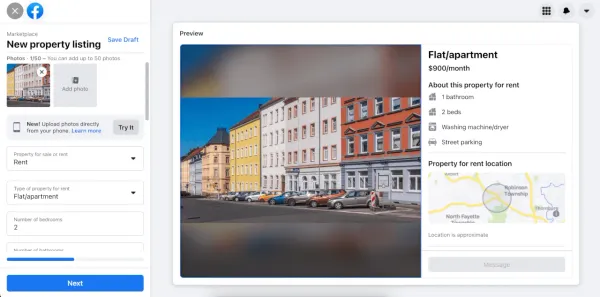How to Find Out Rental Demand in an Area

Introduction
Rental demand is the heartbeat of successful property management. Understanding how strong the demand is in your area can make the difference between high occupancy rates and lingering vacancies. For property managers, knowing how to assess rental demand effectively ensures you’re making data-driven decisions to maximize leasing success and profitability. In this article, we’ll dive into practical strategies, key tools, and actionable insights to help you evaluate rental demand with confidence.
Understanding Rental Demand
What is Rental Demand?
Rental demand refers to the level of interest renters have in properties within a specific area. It’s influenced by various factors, including location, local economy, population trends, and housing supply. For property managers, gauging rental demand is critical to setting competitive rental rates and maintaining high occupancy.
Signs of Strong Rental Demand
If you’re wondering whether rental demand is high in a particular area, look for these key indicators:
- Low Vacancy Rates: Consistently low vacancies often signal strong demand.
- Rising Rental Prices: Steadily increasing rental rates reflect heightened competition among renters.
- Quick Turnover Times: Shorter timeframes for leasing properties indicate a thriving rental market.
- Local Growth: New businesses, amenities, or infrastructure can drive renter interest.
Understanding these trends can help you anticipate the needs of renters and adjust your leasing strategies accordingly.
Tools for Analyzing Rental Demand
Online Platforms and Marketplaces
Several online tools can simplify the process of analyzing rental demand. Here are some trusted platforms:
- Zillow: Offers insights into rental price trends and neighborhood analytics.
- Rentometer: A popular tool for comparing rents in a specific area to gauge competitiveness.
- AirDNA: Provides rental performance data, particularly useful for short-term rentals.
Using these tools, you can access critical data points such as average rents, occupancy rates, and historical trends to inform your strategies.
CRM Tools for Leasing Professionals
For property managers, integrating a leasing CRM into your workflow is a game-changer. A leasing CRM centralizes data, tracks leads, and automates repetitive tasks. With features like real-time analytics and demand tracking, your SaaS platform can provide actionable insights to fine-tune your leasing strategy and ensure you’re targeting areas with the highest potential for success. Platforms like Reffie excel in this regard by offering advanced tools tailored for property managers, enabling smarter and faster leasing decisions.
Publicly Available Data Sources
Government and publicly available data can also be valuable. Sources such as the U.S. Census Bureau or local economic development reports provide demographic and market trends that highlight rental demand. Leveraging these datasets ensures you’re working with comprehensive, objective information.
Steps to Analyze Rental Demand
1. Research Local Demographics
Understanding the demographics of an area is crucial to gauging rental demand. Focus on factors such as:
- Population Growth: Areas with a growing population often signal higher rental demand.
- Median Income Levels: This helps in understanding what renters can afford.
- Age Groups: Certain areas attract younger professionals, while others may appeal to retirees or families.
By identifying these patterns, property managers can tailor their strategies to the needs of specific renter profiles.
2. Examine Market Conditions
Evaluating current market conditions provides clarity on the rental landscape. Key aspects include:
- Rental Rates: Analyze how rents have changed over time to identify trends.
- Days on Market: Properties leasing quickly often indicate strong demand.
- Competitor Analysis: Assess nearby rental properties to determine what makes them successful or less appealing.
3. Use Rent Comparables (Rent Comps)
Rent comps offer valuable insights into how your property stacks up in the market. Consider:
- Property Features: Compare similar properties in terms of size, amenities, and location.
- Rental Pricing: Identify the average rent for comparable units.
- Occupancy Trends: Use tools like Rentometer to evaluate demand and pricing in real-time.
Analyzing rent comps ensures you’re competitively priced and meeting market expectations.
4. Assess Vacancy Rates and Turnover
Vacancy rates are a key indicator of rental demand. High demand is often reflected in lower vacancy rates. To assess this:
- Use platforms like Zillow or Rentometer to identify vacancy trends.
- Calculate turnover rates by analyzing how frequently tenants move in and out.
- Monitor areas with rapid turnover, which may indicate fluctuating demand or other challenges.
5. Leverage Online Reviews and Feedback
Analyzing online reviews on platforms like Google, Apartments.com, or Yelp can provide valuable insights into renter preferences. Steps include:
- Look for recurring themes in feedback (e.g., amenities, location, or management style).
- Use this information to adjust your property’s offerings to align with renter needs.
- Identify areas where competitors may be outperforming you.
How a Leasing CRM Can Help
The Benefits of Data Centralization
Managing rental demand data across multiple sources can be overwhelming. A leasing CRM like Reffie centralizes all key metrics, allowing property managers to:
- Track lead sources to identify high-demand areas.
- Organize rental data for better decision-making.
- Streamline communication with potential renters.
Improving Decision-Making with Analytics
Leasing CRMs provide real-time insights into rental market trends. Features such as predictive analytics can:
- Highlight areas with untapped demand.
- Forecast rental pricing trends for better planning.
- Identify bottlenecks in the leasing process to improve efficiency.
Enhancing Prospect Engagement
Engaging with prospects effectively is critical in high-demand markets. With Reffie, property managers can:
- Automate follow-ups to ensure timely communication.
- Personalize outreach based on renter preferences.
- Convert more leads into leases by nurturing relationships.
Common Mistakes to Avoid When Assessing Rental Demand
1. Relying on Outdated or Incomplete Data
Using stale data can lead to missed opportunities or misinformed decisions. Always prioritize up-to-date and accurate information.
2. Ignoring Competitor Analysis
Failing to evaluate your competition can result in pricing mismatches or overlooked trends. Regularly review competitor properties to stay competitive.
3. Overlooking Renter Feedback
Renter reviews and feedback are invaluable for understanding preferences and identifying areas for improvement. Actively seek and analyze this data.
Conclusion
Understanding rental demand is crucial for property managers aiming to maximize occupancy and profitability. By leveraging tools like Reffie, analyzing key metrics, and staying attuned to renter preferences, you can make informed decisions that position your properties for success.
Call-to-Action
Ready to simplify your leasing process and gain an edge in today’s rental market? Sign up for a free demo of Reffie today and see how our platform can help you analyze rental demand, improve efficiency, and convert more leads into leases.
FAQs
1. What is rental demand, and why does it matter?
Rental demand refers to the level of interest renters have in properties within a specific area. It matters because it directly impacts occupancy rates and profitability.
2. What are rent comps, and how do they help in analyzing rental demand?
Rent comps are comparisons of similar properties in your area. They provide insights into competitive rental pricing and market trends.
3. What tools can property managers use to analyze rental demand?
Popular tools include Zillow, Rentometer, AirDNA, and leasing CRM platforms like Reffie.
4. How can a leasing CRM improve rental demand analysis?
A leasing CRM centralizes data, tracks leads, and provides real-time analytics to simplify demand analysis and optimize leasing strategies.
5. What is the best way to find out vacancy rates in an area?
Use online tools like Zillow or Rentometer and supplement with local market research to accurately assess vacancy rates.




![AI-Powered Multifamily Leasing & Rental Trends: Insights from Tangent Podcast [Podcast Recap]](/content/images/size/w600/2025/02/Tangent-Podcasts.png)